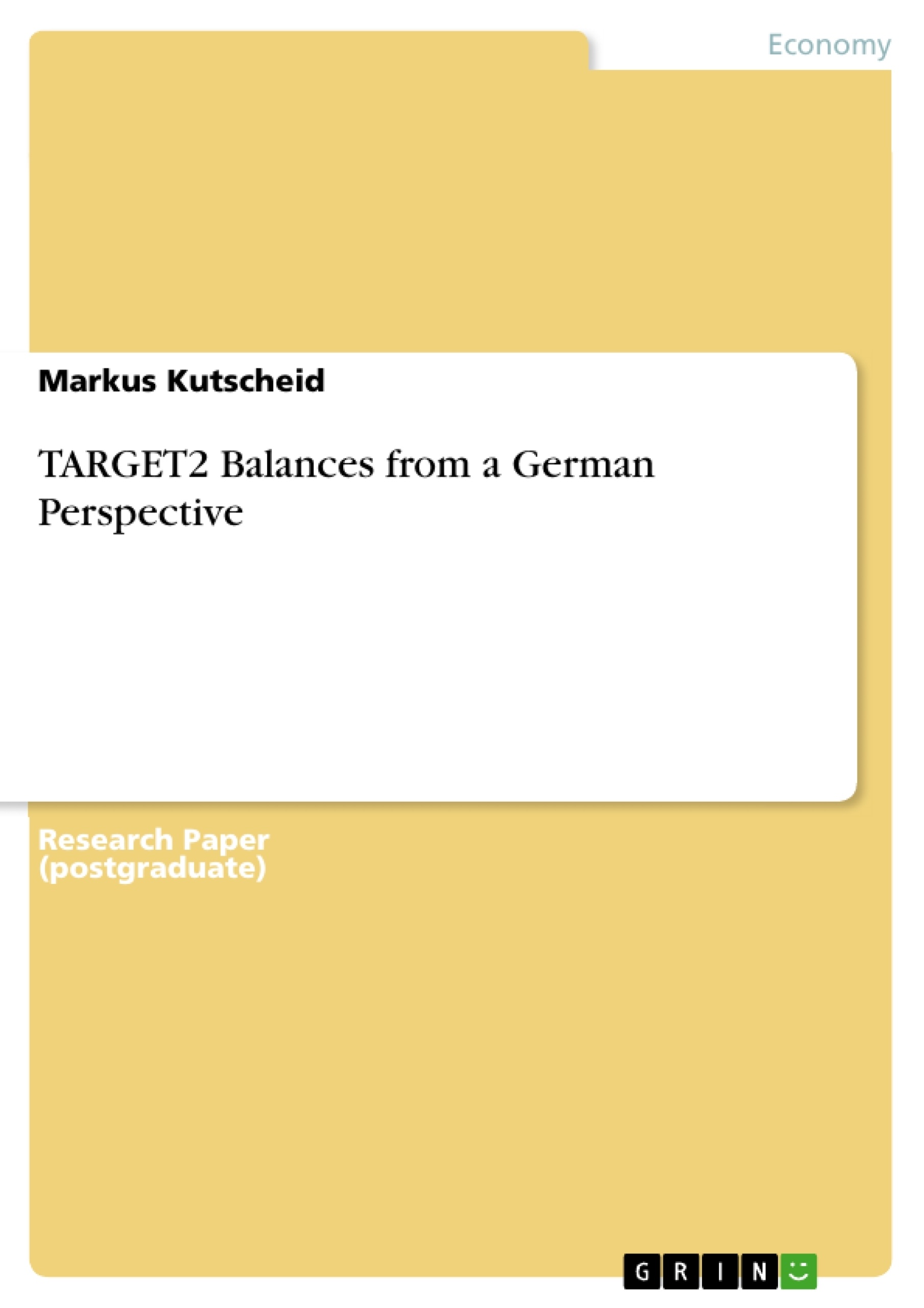In 1999, TARGET (Trans-European Automated Real-time Gross Settlement Express Transfer System) was introduced as a payment system for the EURO. In 2007, it was replaced by TARGET2. TARGET2 serves the daily transfer of money between the participating banks. With the collapse of interbank transactions in Europe as a result of the financial crisis, the European System of Central Banks (ESCB) was forced to take action in order to assure the necessary liquidity for capital outflows and the purchases of goods between European countries. The requirements for collateral for granting bank loans have been successively reduced. This has led to a situation where the EURO system has replaced the interbank market to a large extent. The majority of cross-border financing requirements of the banks are no longer satisfied by loans made between the commercial banks of the participating countries themselves; the commercial banks in the importing countries refinance themselves through their national central banks and the cross-border payments are handled by the European Central Bank (ECB) and thus by the TARGET2 system. The national central bank of the exporting country then receives a claim against the ECB and the national central bank of the importing country receives a corresponding liability. The Deutsche Bundesbank (German Central Bank) in recent years has accumulated in this way TARGET2 claims totalling around EUR 700 billion. This article shows that these claims are debts of the European periphery countries vis-à-vis Germany, that the TARGET2 system contributes to a misallocation of productive resources, that it fosters the accumulation of debt by the European periphery countries, and that a lack of collateral deepens the European balance of payments crisis. It is shown that the TARGET2 balances are representing considerable risks for Germany.
Table of Contents
- ABSTRACT
- KEY WORDS
- INTRODUCTION
- MATERIAL AND METHODS
- RESULTS AND DISCUSSION
- The Collapse of Private Funding Sources
- Emergency Liquidity Assistance
- Dramatic Increase in the TARGET Balances
- TARGET2 Balances in the Euro System
- Public Discussion on the TARGET Balances
Objectives and Key Themes
This article aims to analyze the implications of TARGET2 balances from a German perspective, particularly focusing on the Deutsche Bundesbank's claims against the European Central Bank (ECB). It examines the role of TARGET2 in the context of the European sovereign debt crisis and its potential risks for Germany.- The impact of TARGET2 on cross-border financing and liquidity provision in the Eurozone.
- The role of TARGET2 balances in the context of the European sovereign debt crisis.
- The potential risks posed by TARGET2 balances for Germany, specifically the Deutsche Bundesbank.
- The consequences of potential defaults or withdrawals from the Eurozone on TARGET2 balances.
- The debate surrounding the TARGET2 system and its implications for the future of the Eurozone.
Chapter Summaries
- ABSTRACT: This section provides an overview of the article, highlighting the central theme of TARGET2 balances, their origins in the financial crisis, and the implications for Germany.
- INTRODUCTION: This section introduces the TARGET system, its evolution into TARGET2, and its purpose as a real-time gross settlement system for the Euro. It emphasizes the three primary objectives of TARGET: safe and reliable cross-border payments, efficiency enhancement, and monetary policy implementation.
- MATERIAL AND METHODS: The article utilizes literature research and case studies to analyze TARGET2 balances.
- RESULTS AND DISCUSSION: This section delves into the evolution of TARGET2 balances in the Eurozone, particularly in the wake of the financial crisis. It explores the decline of private funding sources, the rise of emergency liquidity assistance, and the dramatic increase in TARGET2 balances. The article also discusses the public debate surrounding TARGET2 balances and the concerns regarding potential risks for Germany.
Keywords
This article focuses on the TARGET2 system, its impact on the European financial system, and the implications for Germany. Key terms include: TARGET2 balances, Deutsche Bundesbank, European Central Bank (ECB), Emergency Liquidity Assistance (ELA), GIPS countries, GNLF countries, interbank market, and sovereign debt crisis. The analysis centers on the relationship between TARGET2 balances and the Eurozone's stability, examining potential risks and consequences for Germany.- Arbeit zitieren
- Markus Kutscheid (Autor:in), 2012, TARGET2 Balances from a German Perspective, München, GRIN Verlag, https://www.grin.com/document/198752



